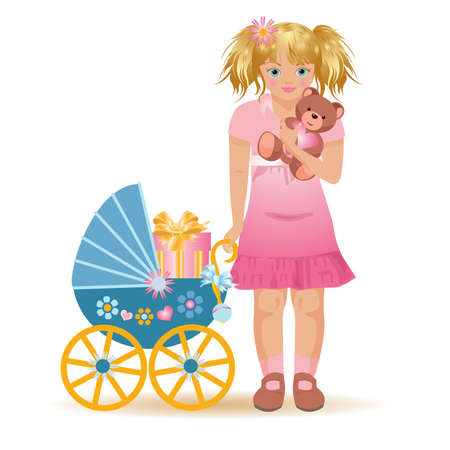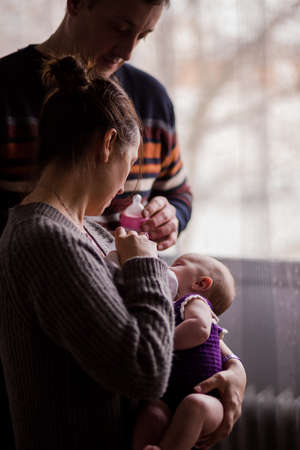1. Understanding Your Newborn’s Diapering Needs
Newborns have delicate skin and sensitive needs, making frequent diaper changes essential for their comfort, hygiene, and health. Since babies eat often and have immature digestive systems, they produce frequent wet and soiled diapers. Understanding your newborn’s diapering needs can help keep them comfortable and reduce the risk of irritation or infections.
How Often Do Newborns Need a Diaper Change?
Newborns typically require a diaper change every 2 to 3 hours, or whenever their diaper is wet or soiled. Since babies urinate frequently and pass stool multiple times a day, keeping their diaper fresh helps prevent rashes and discomfort.
Diaper Changing Frequency Based on Age
| Age | Diaper Changes per Day |
|---|---|
| Newborn (0-1 month) | 10-12 times |
| Infant (1-3 months) | 8-10 times |
| Older Baby (3+ months) | 6-8 times |
Why Frequent Diaper Changes Matter
Your baby’s skin is highly sensitive, and prolonged exposure to moisture can lead to diaper rash. Changing diapers regularly helps in several ways:
1. Prevents Diaper Rash
A clean diaper reduces prolonged contact with urine and stool, which can cause irritation and redness.
2. Maintains Hygiene
A wet or dirty diaper can become a breeding ground for bacteria, potentially leading to infections.
3. Keeps Your Baby Comfortable
A dry diaper means your baby stays happier and sleeps better without unnecessary discomfort.
Signs It’s Time for a Diaper Change
- The diaper feels heavy or full.
- You notice a strong smell of urine or stool.
- Your baby seems fussy or uncomfortable.
- The diaper looks saggy or leaks.
How Often Should You Change a Newborn’s Diaper?
Newborns go through a lot of diapers, and knowing when to change them can help keep your baby comfortable and prevent diaper rash. In general, you should change your babys diaper whenever it is wet or soiled, but the frequency can vary depending on different factors.
General Guidelines for Diaper Changes
Newborns typically need their diapers changed every 2 to 3 hours. However, this can vary based on whether the diaper is wet or soiled. Here are some general recommendations:
| Type of Diaper | How Often to Change |
|---|---|
| Wet Diapers | Every 2 to 3 hours |
| Soiled (Poopy) Diapers | Immediately when noticed |
The Difference Between Wet and Soiled Diapers
A wet diaper contains only urine, while a soiled diaper includes poop. While wet diapers can sometimes be left on for a little longer, dirty diapers should be changed as soon as possible to prevent irritation and discomfort.
Signs That Its Time for a Diaper Change
- The diaper feels heavy or full.
- You notice a strong smell.
- Your baby seems fussy or uncomfortable.
- The diaper looks saggy or leaks.
- The wetness indicator (if available) changes color.
The Importance of Frequent Diaper Changes
Changing diapers frequently helps prevent diaper rash, keeps your baby feeling fresh, and reduces the chances of infections. Even if a diaper doesn’t seem too full, it’s good practice to check regularly and change it when needed.

3. Signs That It’s Time for a Diaper Change
Recognizing when your newborn needs a fresh diaper is essential for keeping them comfortable and preventing diaper rash. Babies can’t tell you with words when they need a change, but they give plenty of signs that it’s time to swap out that wet or soiled diaper.
Common Indicators That Your Baby Needs a Fresh Diaper
Here are some key signs to watch for:
| Sign | Description |
|---|---|
| Fussiness and Crying | Your baby may become irritable or cry when they feel uncomfortable in a wet or dirty diaper. |
| Visible Wetness | If the diaper has an indicator line, check if it has changed color. Otherwise, gently press on the diaper to feel for wetness. |
| A Strong Odor | A noticeable smell often signals that it’s time for a diaper change, especially after a bowel movement. |
| A Heavy or Sagging Diaper | If the diaper feels heavy or sags significantly, it’s likely full and needs to be changed. |
| Your Baby Stops Feeding or Playing Comfortably | An unexpected pause during feeding or playtime could mean your baby feels discomfort from a wet or soiled diaper. |
| Diaper Rash or Skin Irritation | If you notice redness or irritation, frequent changes can help prevent further discomfort. |
The Importance of Frequent Checks
Your newborns delicate skin is highly sensitive, making frequent diaper checks crucial. A good rule of thumb is to check their diaper every two to three hours, even if they aren’t showing obvious signs of discomfort. This proactive approach helps maintain their skin health and keeps them happy.
The Role of Wetness Indicators
If you’re using diapers with wetness indicators, these can be a helpful tool in determining when its time for a change. The line on the diaper will change color when moisture is detected, making it easier to assess without opening the diaper unnecessarily.
Avoiding Overlooked Signs
Babies don’t always cry when they need a change. Sometimes they may just appear restless or have subtle facial expressions of discomfort. Observing your baby’s behavior closely will help you develop a routine that keeps them dry and content.
4. Daytime vs. Nighttime Diaper Changes
Newborns go through a lot of diapers each day, but the frequency of changes can vary depending on whether it’s daytime or nighttime. Understanding when to change your baby’s diaper can help you maintain good hygiene while also encouraging healthy sleep habits.
Daytime Diaper Changes
During the day, newborns tend to be more active and feed more frequently, which means they will need diaper changes more often. Here’s what you should keep in mind:
- Check every 2-3 hours: Newborns usually wet their diapers frequently, so checking every couple of hours helps prevent discomfort and diaper rash.
- Change after every feeding: Since babies often urinate or have bowel movements during or after feedings, this is a good time for a fresh diaper.
- Be mindful of dirty diapers: Always change a poopy diaper as soon as possible to prevent irritation and infection.
Nighttime Diaper Changes
At night, the goal is to balance keeping your baby clean with allowing them (and you) to get as much rest as possible. Here’s how you can manage nighttime diaper changes:
- Avoid unnecessary wake-ups: If your baby is sleeping soundly and only has a wet diaper, you may not need to wake them for a change immediately.
- Use an absorbent nighttime diaper: Many parents opt for extra-absorbent diapers at night to minimize disruptions.
- Change if there’s a poop: A soiled diaper should always be changed right away, even at night, to prevent irritation and discomfort.
- Keep it quick and quiet: Use dim lighting and minimal interaction to avoid fully waking your baby.
Day vs. Night: A Quick Comparison
| Daytime | Nighttime | |
|---|---|---|
| Frequency | Every 2-3 hours or after each feeding | If wet, only when necessary; always if soiled |
| Main Goal | Keeps baby comfortable and rash-free | BALANCE hygiene with uninterrupted sleep |
| Tips | – Change frequently – Check before and after naps – Use breathable diapers |
– Use overnight diapers – Keep changes quick and quiet – Avoid waking unless necessary |
Finding the Right Balance
The key to managing daytime versus nighttime diaper changes is understanding your baby’s needs while also prioritizing sleep. During the day, frequent changes are essential for comfort and hygiene. At night, using highly absorbent diapers and minimizing disruptions can help both you and your little one get better rest.
5. Avoiding Diaper Rash and Keeping Your Baby Comfortable
Diaper rash is a common concern for newborns, but with the right care, you can prevent discomfort and keep your baby’s skin healthy. Here are some essential tips to help you avoid diaper rash and ensure your little one stays comfortable.
Choosing the Right Diaper
Selecting the right diaper is crucial in preventing diaper rash. A good diaper should be absorbent, breathable, and fit snugly without being too tight. Here’s a quick comparison of different diaper types:
| Diaper Type | Pros | Cons |
|---|---|---|
| Disposable Diapers | Highly absorbent, convenient, easy to use | Can contain chemicals, not eco-friendly |
| Cloth Diapers | Eco-friendly, gentle on skin, reusable | Requires frequent washing, less absorbent than disposables |
| Hybrid Diapers | A mix of convenience and reusability, better for sensitive skin | More expensive than standard cloth or disposable options |
Tips for Preventing Diaper Rash
A few simple practices can go a long way in keeping your baby’s skin irritation-free:
- Change diapers frequently: Wet or soiled diapers should be changed as soon as possible to prevent moisture buildup.
- Cleansing properly: Use fragrance-free wipes or warm water with a soft cloth to clean your baby’s bottom gently.
- Airing out the skin: Allow your baby’s skin to breathe by letting them go diaper-free for short periods.
- Selecting a good diaper cream: Apply a barrier cream with zinc oxide or petroleum jelly to protect against moisture.
- Avoiding tight diapers: Ensure the diaper fits well but isn’t too tight to prevent chafing.
- Picking breathable materials: Choose diapers made from soft, breathable fabrics to reduce irritation.
The Importance of Maintaining Healthy Skin
Your baby’s skin is delicate and requires extra care. Keeping it dry and moisturized helps prevent irritation. If you notice persistent redness or rashes that don’t improve within a few days, consult your pediatrician for further advice.


